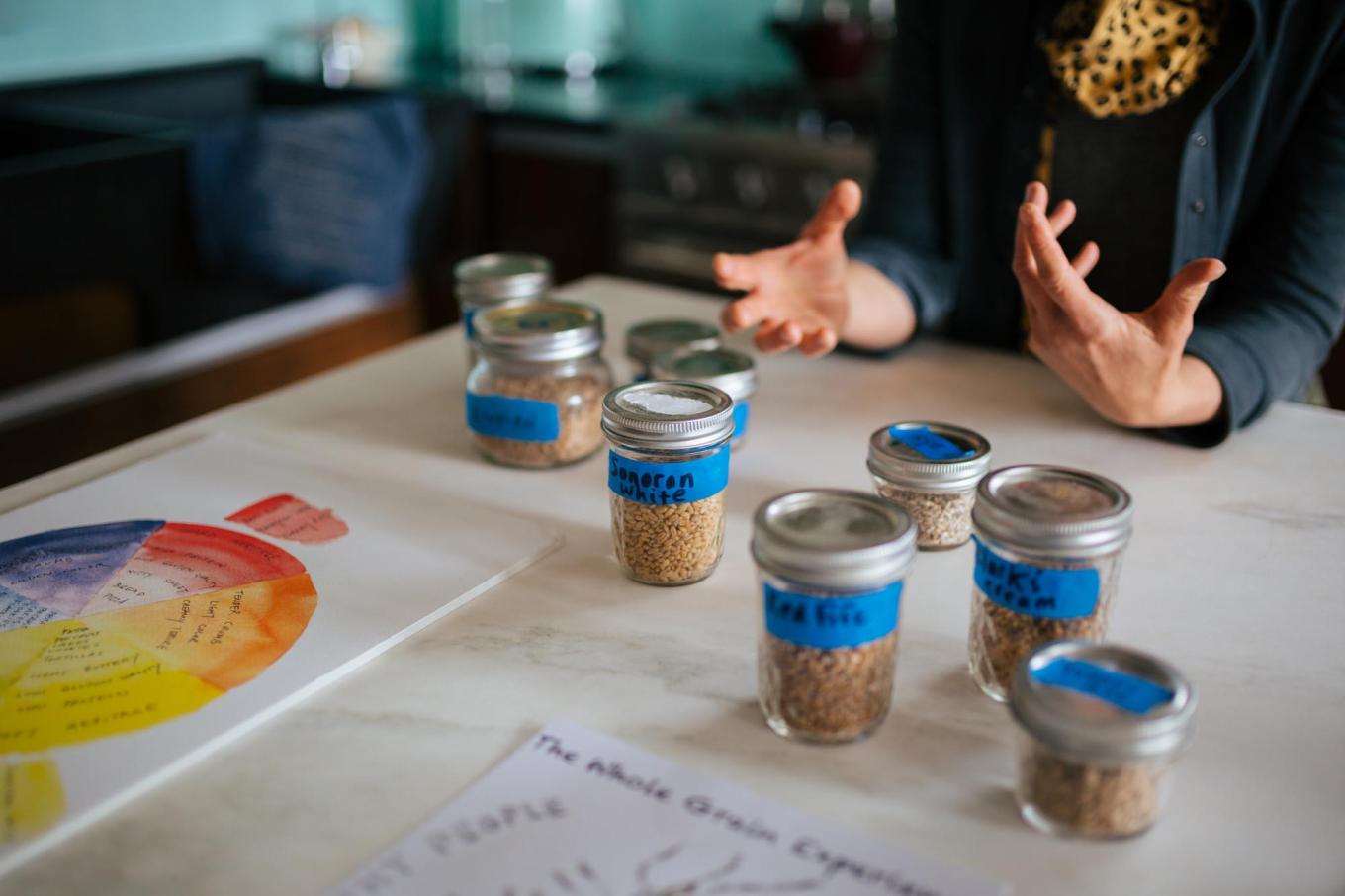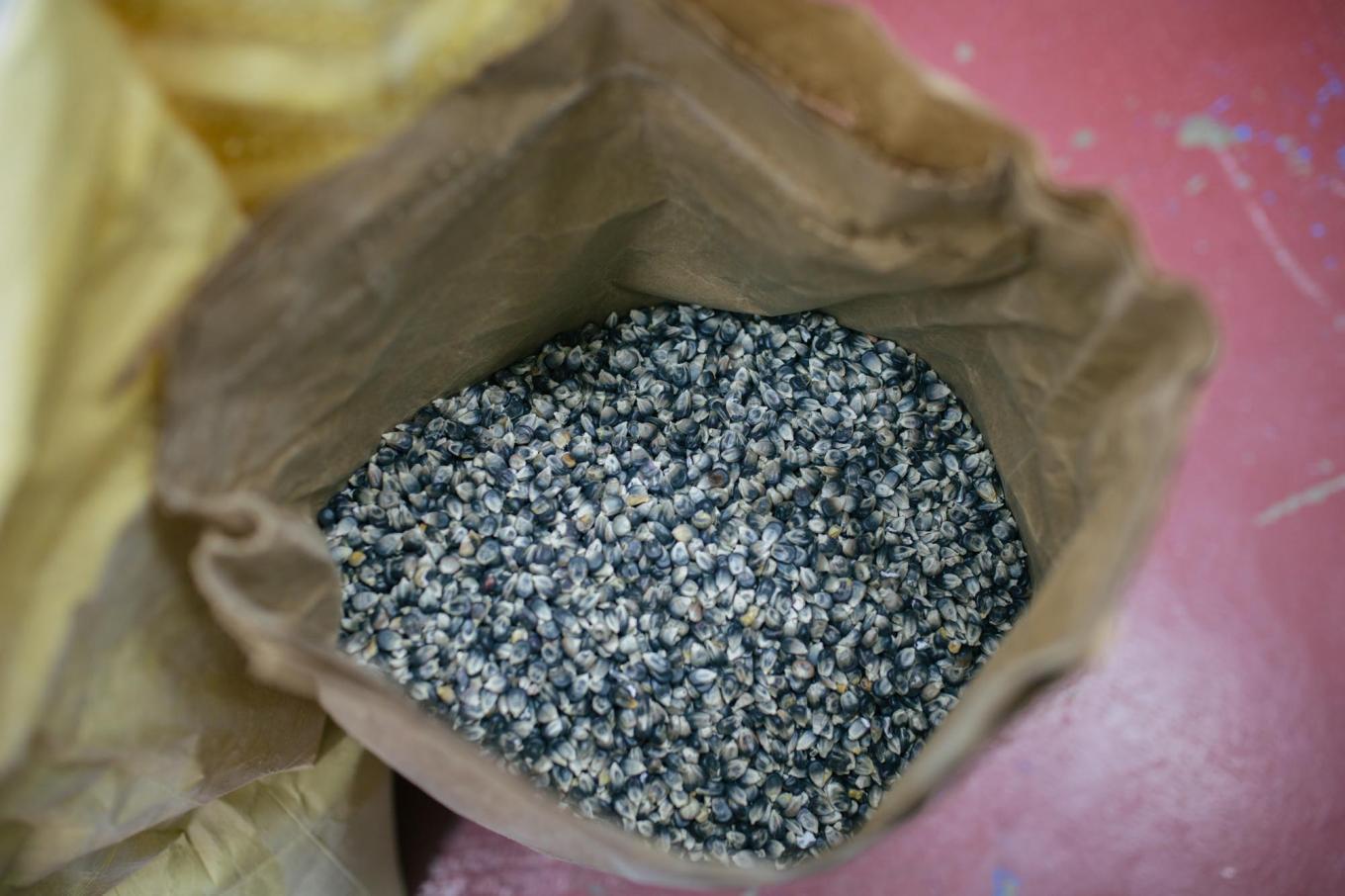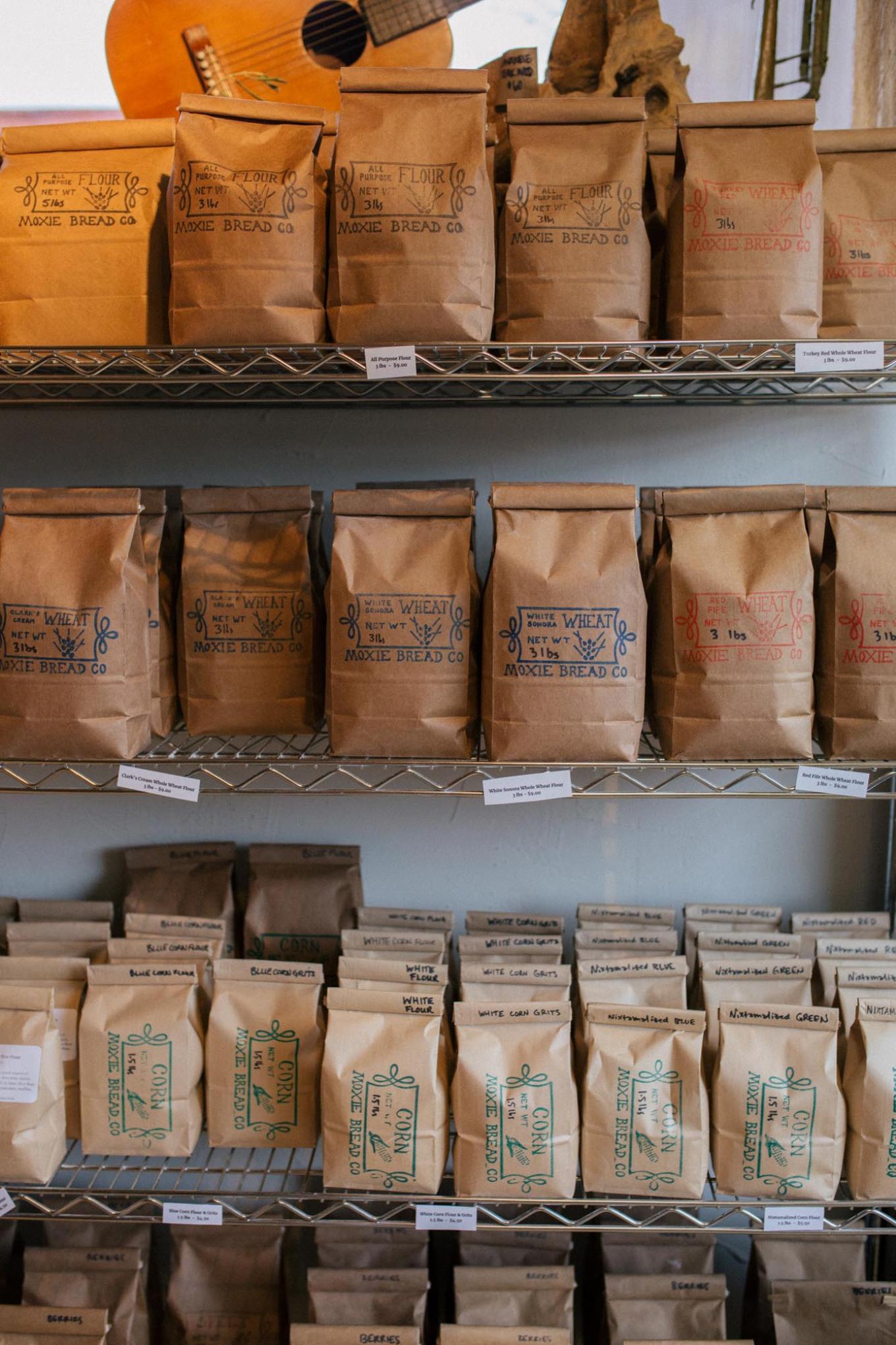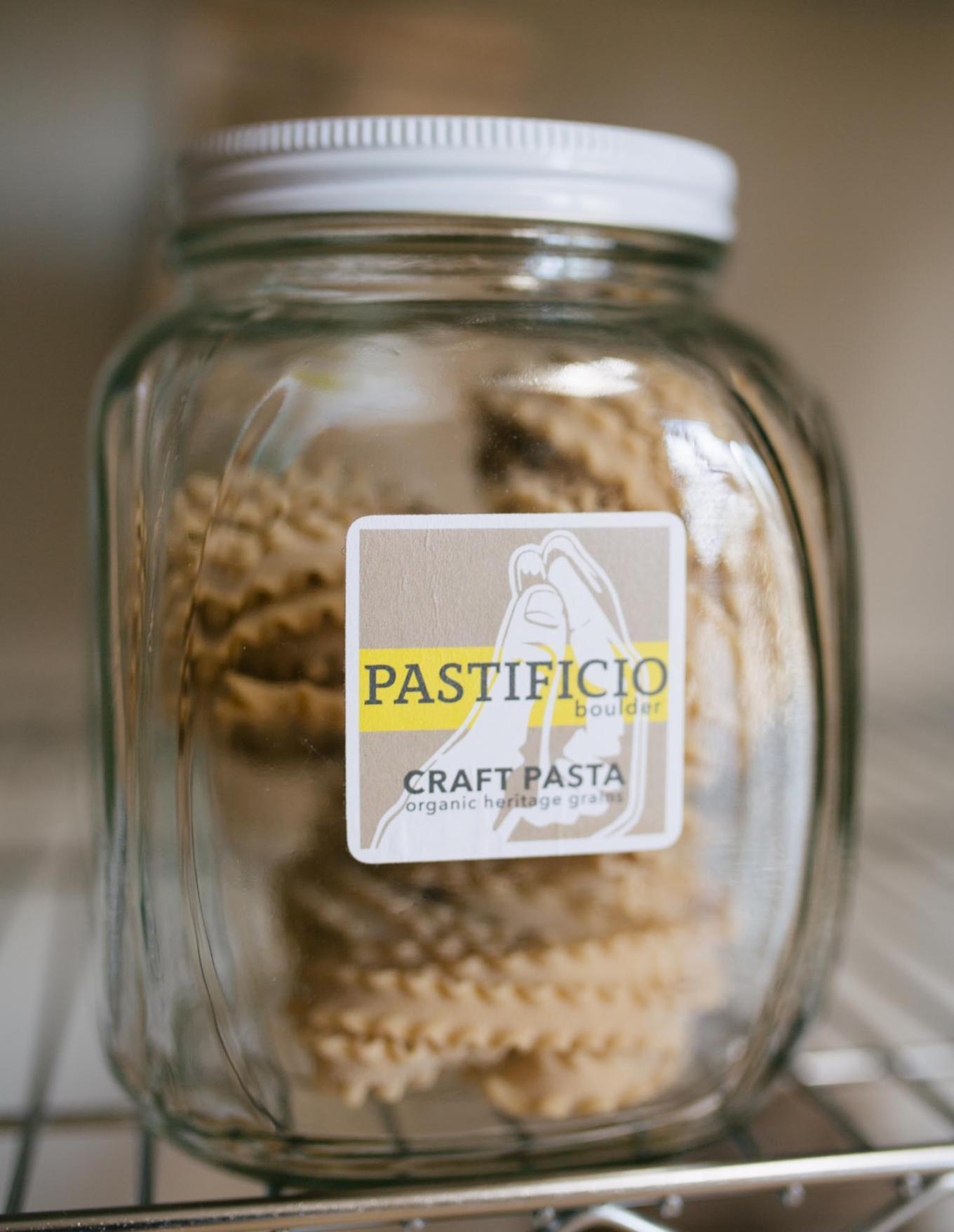
The Mad Agriculture Journal
Front Range Grains
Published on
June 08, 2021
Written by
Sophia Piña-McMahon
Photos by
Sophia Piña-McMahon
The early days of the coronavirus pandemic saw a massive trend in bread baking. From sourdough to focaccia, social media feeds erupted with photos of home-baked loaves from seasoned and novice bakers alike. Flour and yeast became hot commodities, and grocers struggled to keep up with the demand. There was just something about slicing a homemade loaf and sharing it with others that brought people comfort and a sense of normalcy—something we are all craving these days—and this phenomenon is a testament to the deep history that humans have with baking bread.
Bread has been a fundamental component of the human diet since the dawn of farming and civilizations, eaten symbolically across cultures and religions. In Jewish cuisine, an eggy, braided bread called Challah is consumed on the Sabbath and other festive occasions. In Ethiopia, a small regional grain called teff makes up the dough of Injera, a pancake-like fermented bread used to scoop up food during all traditional Ethiopian meals. And Lavash, a traditional flatbread in Armenian cuisine, is such a key part of the country’s culture that UNESCO listed it as an “Intangible Cultural Heritage of Humanity”. The list goes on and on—nearly every cuisine has its own traditional style of bread, making it a defining food across cultures.
Archaeologists estimate that humans have been baking bread for over 10,000 years—since the beginning of the Egyptian era. A food that has stood the test of time, we still bake bread in much the same way as we did thousands of years ago, and the social aspect of breaking bread together with friends remains a deeply grounding experience.

Species of Bread
Despite the longstanding cultural importance of bread, the loaves that we buy in supermarkets today bear little to no resemblance to the ones I’ve just described. Most don’t give much thought to things like flour, despite there being a wide range of varieties with different flavor profiles and nutritional values. The resurgence of grain excitement comes from “ancient” and “heritage” varieties, which are grains that pre-date the modern strains of wheat that make up many of our flours today. While “ancient” and “heritage” have no universal definition, ancient grains are typically classified as ones that have remained largely unchanged since the dawn of civilization—think spelt, Kamut, emmer, einkorn, quinoa, or buckwheat. Heritage grains are more modern than ancient grains, but they still pre-date the Green Revolution—the period in the 1960s when mainstream food production transitioned to use of genetically modified, high-yielding seeds.
Wine has long been known for its terroir, a term used to describe how a particular region’s climate, soils and terrain affect the taste of wine. A similar concept applies to grains. Ancient and heritage varietals of wheat are often regionally adapted—in other words, consistently grown in climates, terrain, and soils where they are adapted to thrive. This supports healthy soil ecosystems, leading to higher concentrations of nutrients in these grains. When baked into breads, they’ll have far superior flavor and nutrition compared to loaves made from modern wheat varietals. Unfortunately, ancient and heritage grains have been all but abandoned in mainstream food production because they are low yielding, returning lower profits for farmers. In the quest for quantity, we have abandoned quality.
Luckily, there is a growing movement of farmers, millers, bakers, chefs, scientists, and activists in Colorado who are working to revive ancient and heritage grains for our health, the environment, and the local economy.
On the Farm
All food movements start with a seed, and that’s where Mad Agriculture comes in. Working to shift mainstream farming away from industrial, extractive systems to regenerative ones, where crops are grown and animals are raised in stewardship to the land and the soil. Driven by a place-based approach—oriented around local heritage, cultures, landscapes, opportunities and experiences—they quickly grew interested in grain revival.
Heritage varieties of wheat can certainly contribute to the organization’s goals to cultivate healthier land and soil. Some heritage varieties have longer root systems than modern wheat, which provide a host of benefits to the environment. They also distribute plant sugars more effectively throughout the soil, feeding all the tiny organisms that work around the clock, recycling nutrients that in turn support plant growth. This nutrient recycling also builds healthier soil, which can serve as a carbon sink—an ecosystem that draws carbon out of the atmosphere—as well as combat problems like soil erosion and runoff.

However, it’s important to note that simply planting more ancient and heritage grains isn’t going to restore the land or solve climate change. Our modern agricultural system is highly focused on yields as a measure of success, and if we were to translate that mentality to expanding the production of ancient and heritage wheat varietals, we could very well end up with a flavor and nutrient-deficient grain system similar to the norm today. Farm management is an important factor for seeing the potential environmental benefits come to fruition. Ancient and heritage grains fit well into planned crop rotations on diversified farms—ones with a farming model that is more catered towards the environment than industrial monoculture. While natural food companies that use ancient and heritage grains often make claims that the grains themselves are better for the environment, it is important to note that the real benefit of growing these grains comes from the systems change that they contribute to—a system where fewer chemical pesticides and fertilizers are used, and soil health is prioritized.
Mad Ag recognizes that without a market for these grains, none of these environmental benefits are possible. This means that much of their work is in creating and facilitating relationships along the local supply chain to aid in the growth of a local market for ancient grains. Two years ago, they partnered with local seed savers at MASA Seed Foundation to conduct small-scale field trials and learn which varieties grow best in the Front Range. The following season, the team connected farmers across the region with the seed varieties that they found had the potential for the highest yields. More logistics came into play after growing the grains at larger scales, so when last year’s harvest came around, Mad Ag helped farms borrow and rent the equipment they needed to clean and harvest wheat before sending it off to mills. The organization’s work continues to advance understanding around grains and the crop’s potential to contribute to thriving farm economies and healthier soils.
At the Bakery
Mad Ag’s first year of grain trials in 2019 culminated in a community harvest event and a farm-to-table dinner at local bakery, Moxie Bread Co. At the event, relationships were cultivated between local farmers, millers, bakers, and grain-afficionados alike, keeping the movement’s momentum going. Again, the experience of breaking bread together with friends is not one to be underestimated.
Few people understand that concept better than Andy Clark, two-time James Beard semifinalist and owner and baker at Moxie Bread Co. in Louisville, Colorado. His bakery sources the ingredients for all its breads from regional heritage growers, and all its flour is stone-milled in house. Clark serves as the Chair of the Board of Directors of the Colorado Grain Chain—a non-profit dedicated to raising awareness and demand for local ancient and heritage grain products. He is without a doubt one of the driving forces behind the grain revival in Colorado.
While Mad Ag focuses largely on the farm and environment aspects of the grain chain, Clark focuses on the culinary piece—baking breads that are superior in flavor and nutrition to the plastic-wrapped loaves we typically see in the grocery store. While he’ll be the first to tell you that he isn’t a scientist, Clark has amounted a plethora of anecdotal evidence about how much easier it is for his customers to enjoy and digest his breads made from ancient and heritage grains. “We’ve been finding at Moxie that these grains are just so much easier on the gut, and a lot of people who have sensitivity to wheat—not Celiac disease, but more general issues with digesting gluten—are able to eat and enjoy our breads made from older varieties. We have many customers that won’t eat bread or pastries unless it’s from us because of their gut sensitivity.”
Even though his evidence is anecdotal, emerging science suggests that Clark is onto something.

Recent studies have shown that ancient and heritage grains may indeed be better for our health than modern varietals. As a result of the nutrient stripping that occurs in mainstream processing to make flours whiter, modern grains have been linked to a rise in auto-immune diseases and other inflammatory conditions. Celiac disease and gluten sensitivity (bloating and abdominal pain after gluten consumption) have both grown exponentially in the U.S., where modern wheat dominates the market. Existing studies on wheat consumption and people with gluten sensitivity suggest that heritage varieties pose fewer problems to our digestive system and overall health.
One such study was conducted in 2018, when researchers at the University of Bologna observed how human liver cells responded to digested bread made from ancient wheat versus digested bread made from modern wheat. They found that the cells exposed to modern wheat were less able to suppress an inflammation response—the kind that lead to abdominal pain and bloating for people who have gluten sensitivities. Taking those findings a step further, researchers at Cambridge University conducted a dietary intervention study on people with irritable bowel syndrome, a common condition in the U.S. where frequent digestion issues cause painful cramps, bloating, tiredness, and irregular stools. Over six weeks, one group of study participants ate products made from ancient and heritage grains, while the other group ate products made from modern grains. The researchers found that the ancient grain group experienced significant improvements in the extent and severity of their IBS symptoms, while the modern grain group saw no improvements in symptoms.
How did different varieties of the same crop produce such a stark contrast in digestion experiences? It all goes back to how the grains were grown. “The nutrients that are in the soil translate to the grain and that translates to what’s good for our guts,” says Mona Esposito, a local grain expert who has been affectionately dubbed “The Grain Lady.” Mona’s passion for grains started with home baking, and eventually grew into nutrition research and heritage grain advocacy. She is a founding member of the Colorado Grain Chain and has attended events around the world to meet with leaders in the grain revival movement. In 2018, with support from Whole Foods Market, Esposito even gave a presentation to international grain experts about the benefits of local grain economies at a conference at the University of Bologna in Italy. She is both well-versed and well-experienced in the benefits of ancient and heritage grains, and she regularly consults with bakers and millers alike on how to make the shift from using modern wheat to older varietals.
According to Esposito, the science and nutrition piques both producer and consumer interest in ancient grains, but the flavor factor is what convinces them to fully make the switch. The movement must emphasize taste above all to continue moving forward. “We need chefs and bakers talking about the flavor,” says Esposito. “We don’t want to spread the stereotype of hippy, healthy breads that taste like cardboard—but it’s good for you! That’s why presentation and education are important. People don’t have to overthink everything, and sometimes as long as we get the taste and flavor across to them, that’s okay too.”
Chefs and bakers like Clark can lead the way. He confirms that while Moxie’s customers continue to return to the bakery for a variety of factors, the superior flavor and variety of their breads is the key. That is where ancient and heritage grains really shine. “The flavors are just outstanding. There is much more diversity of grain varieties to choose from when you’re working directly with a farmer rather than buying from a big distributor, and that translates into better breads” says Clark.

Turkey Red, Red Fife, White Sonora, and Khorasan are names of just a few of the many heritage varieties Clark gets to choose from. Each one has a different flavor profile, as well as different gluten and protein contents, which help determine what each variety can be used for. For instance, Turkey Red (Clark’s favorite) is robust and “wheaty” in flavor and produces 100% whole wheat loaves with satisfying crumb and a mild sourdough flavor. On the other hand, White Sonora is light and buttery, and is excellent for making handmade pastas or pastry crusts. One could truly go on and on for each varietal, the point being that when it comes to flavor, there is simply no competition between heritage grains and modern ones. This I can confirm.
On a personal note, I haven’t eaten bread in nearly four years, due to gluten sensitivity similar to what Clark’s customers had previously described. After countless hours of research and reporting for this piece, I decided the best way to research ancient and heritage grains was to try them out for myself. So, on a clear, crisp morning in autumn, I made the short drive from Boulder to Louisville to purchase one of Moxie’s loaves for myself. I arrived at nine o’clock, and there was already a line for the bakery stretching down the block. As I inched closer to the front, I peered into the bakery window, which was lined with loaf after loaf of rustic, European-style bread. A sign above them proclaimed “All breads made with 100% organic, heritage grains”. After a few minutes of indecisiveness I bought myself a dark, round, lightly seeded whole-grain loaf called “Frobrod”.
The aroma of fresh bread on my drive home was absolutely overwhelming. The moment I walked in the door, I took out my bread knife and cut a slice from the loaf. I toasted the slice, then spread a thin layer of strawberry jam on top and took my very first bite of heritage grain bread. It was nothing like anything I had ever tasted before—an entirely different species of bread compared to what I had bought in supermarkets in the past. The crust had an audible crunch, but the inside was soft and light. There was a complex mix of flavors in every bite—mild notes of sourdough, a robust “wheaty” taste, and hints of nuttiness and sweetness. I happily polished off the loaf in about a week, and did so without experiencing the gluten sensitivity that I had in the past. I was officially converted back into a bread eater, and I won’t be looking back anytime soon.
In the Kitchen
In the beginning of COVID, when it was harder than usual to go to bakeries and restaurants, it only made sense that people turned to their own kitchens to explore the many possibilities that lie within a bag of flour. Since all-purpose, white flour was flying off supermarket shelves, some consumers turned to local bakers and millers (like Moxie) to get their hands on some flour. The Colorado Grain Chain recognized this moment as a rare opportunity to educate a whole new wave of interested bakers. They made a public directory of local growers, bakers, millers, and educators so that people in the community could find ancient and heritage flours, breads, and other products. The organization also started a virtual Grain Home School, where once a week a local grain expert would take one hour to answer community questions and teach something new about baking, milling, or growing heritage grains.
Similar programs in the community typically exist in-person, such as the University of Colorado at Colorado Springs’ Grain School. Established in 2016, the Grain School is an interdisciplinary course that invites scientists and academics to connect with members of the local grain chain, including farmers, millers, brewers and bakers, chefs, and educators. During the three-day seminar, students take courses in the history of grains, growing practices, nutrition, baking, fermentation and more. It’s an exchange of learning, culture, and community—one that grain afficionados like Esposito find critically important to the movement. Educating people about ancient and heritage grains can paint a fundamentally new picture of what it means to bake and eat bread. The more they know, the more we’ll see all the benefits of growing, using, and eating these grains play out.
Secret Ingredient: Story
We have moved very far away from the food systems of our ancient ancestors. Many of us have no idea where the eggs in our morning breakfast came from. What did that farm look like? Who was the farmer? How far away is their farm? While awareness about our food is growing, transparency and traceability in the system are far away from becoming mainstream practices. One of the places where it’s easiest to learn about our food is from local farmers, chefs, and bakers, whose hands we can physically shake.
Perhaps that is why the Colorado grain revival movement gained ground alongside the early wave of pandemic bakers. Much of the interest in these grains comes from the satisfaction of finding and eating foods that hold story. It gives consumers something to hold onto and get excited about, and that allows for everything else to come into play—where farmers can get paid more for their grain, sell directly to mills, and provide ingredients to bakers that can tell their story. None of this is possible in an industrial system, where grains are identified only by a few letters and numbers on a sack.
In other words, there is a distinct difference between feeding and nourishing. The latter can only be done when food is connected to people and place.
